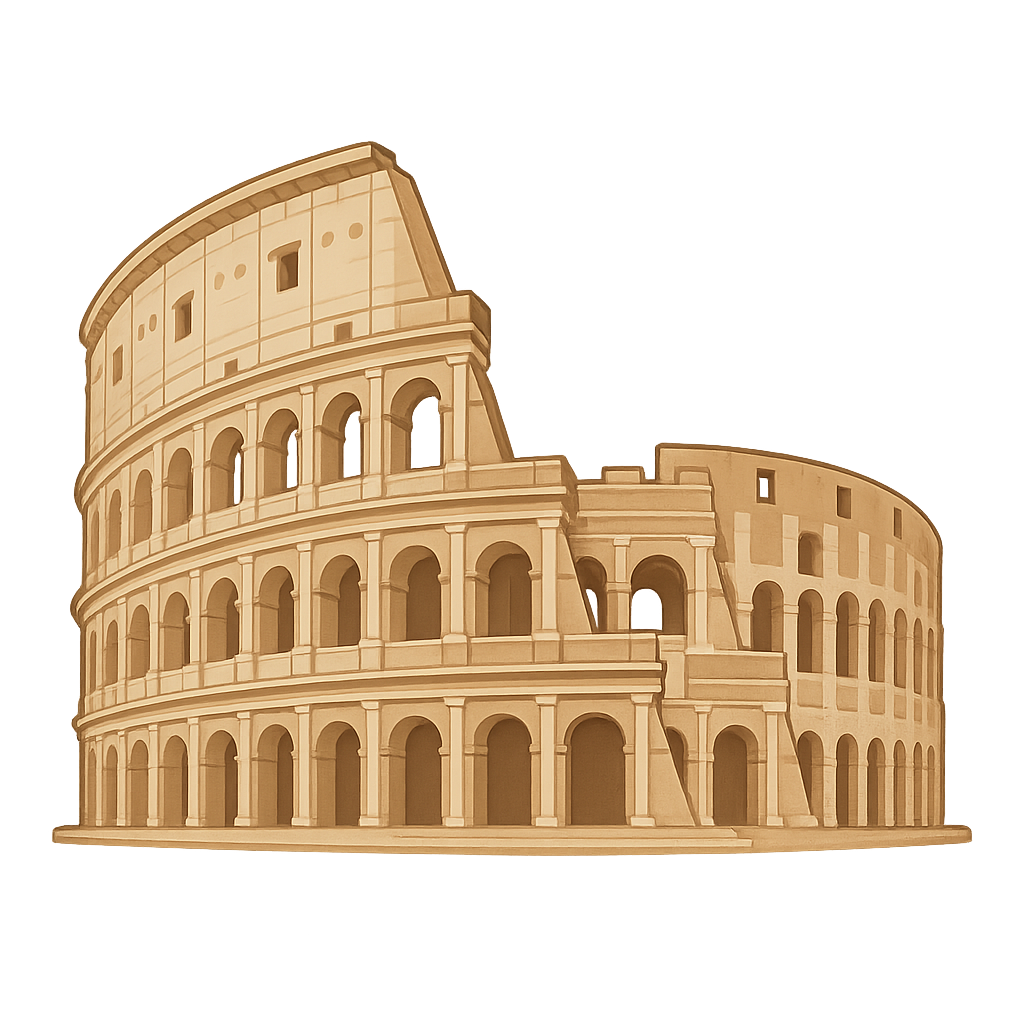The Stone Giant of Rome
Imagine standing under a warm, golden sun in a busy city, surrounded by the sounds of chatter and zooming scooters. Before you rises a giant, a circle of stone so big it seems to touch the sky. Its walls are the color of honey, and they are filled with endless rows of arches, like giant open windows staring out at the world. For thousands of years, I have stood here, listening to the whispers of history carried on the breeze. People walk through my broken walls and look up with wide eyes, wondering about the secrets I hold. They feel the history in my very bones, a story of power, celebration, and time itself. I am the Colosseum.
My story began a very, very long time ago, with an emperor named Vespasian. He wanted to give a great gift to the people of Rome, something to show them they were celebrated. So, in the year 72 CE, he decided to build me. It was a massive challenge. Thousands of workers were brought to my construction site. They cut and lifted huge blocks of a strong, beautiful stone called travertine. To make me so tall and sturdy, my builders used one of the cleverest inventions of all: the arch. They stacked arches on top of arches, creating three levels of stunning open corridors. This design made me strong enough to stand for centuries. After eight years of hard work, I was finally ready. Vespasian’s son, Emperor Titus, opened my gates to the public in the year 80 CE with a spectacular festival that lasted for 100 days.
I quickly became the heartbeat of the city. On a show day, a river of people would flow through my eighty entrances, their excited voices echoing through my halls. I could hold more than 50,000 people, from the richest citizens in the front rows to the common folk at the very top. Inside, they would watch incredible shows. There were colorful parades with musicians playing lively tunes and reenactments of famous battles that made history come alive. To protect everyone from the hot Roman sun, sailors would pull a giant fabric roof, called a velarium, across my open top. It was like a huge, temporary ceiling that cast a cool shade over the cheering crowds. I wasn't just a building; I was a place where the whole community of Rome came together to share moments of wonder and excitement.
But empires don't last forever, and my golden age came to an end. After the Roman Empire fell, I was left to face the passing of time. Powerful earthquakes shook my foundations, causing parts of my outer wall to crumble. For many years, people saw me not as a treasure but as a quarry. They took my strong travertine stones to build new palaces, bridges, and famous churches all over Rome. For hundreds of years, I became a quiet ruin, where wildflowers grew in the cracks and birds nested in my arches. But then, people began to see me differently. They realized I was a precious link to the past. They started to protect me, studying my design and clearing away the debris to uncover my former glory.
Today, I stand proudly as a symbol of history and incredible engineering. Millions of visitors from every corner of the world walk through my arches each year. They listen to guides tell my story and imagine the cheers that once filled my arena. I am no longer a place for ancient shows, but a classroom for the world. I remind people of the amazing things humans can create and the importance of preserving the past. My story is one of strength and survival, and I hope I inspire everyone who sees me to build their own wonders that will stand the test of time.
Reading Comprehension Questions
Click to see answer
